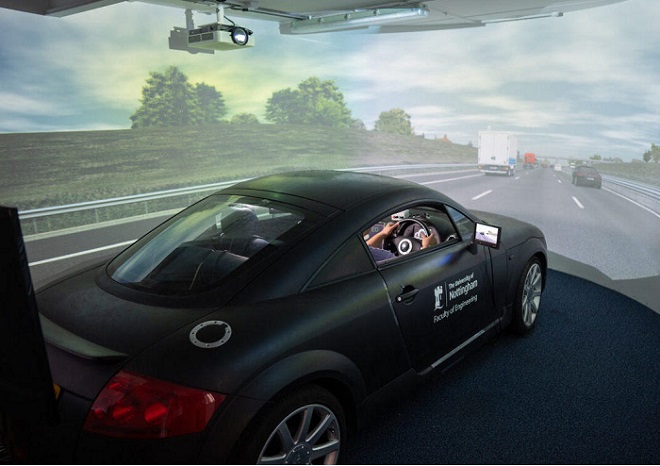Auto
University of Nottingham Leads Development of Cutting-Edge Driver Drowsiness Alert System

- University of Nottingham’s Human Factors Research Group collaborates with Blueskeye AI to validate drowsiness detection technology for European cars, meeting EU standards.
- Blueskeye AI’s machine learning algorithms, tested in Nottingham’s driving simulator, demonstrate high sensitivity in detecting driver drowsiness, paving the way for safer automotive technology.
The University of Nottingham’s Human Factors Research Group, in collaboration with BlueSkeye AI, has successfully validated the company’s vehicle drowsiness detection technology for use in cars in Europe ahead of a new law which comes into effect on 7 July 2024.
The validation test took place in the University of Nottingham Human Factors Research Group’s driving simulator, which comprises an Audi TT car in an immersive curved screen. Twenty drivers spent up to an hour undertaking a monotonous driving task, following a car on a motorway, and were asked at five-minute intervals to assess their tiredness using a well-established subjective scale, the Karolinska Sleepiness Scale.
Drivers’ assessments of tiredness were compared to assessments of tiredness generated by Blueskeye’s machine learning algorithms in line with the official EU testing protocol. The algorithms use Near Infra Red cameras mounted in the car’s left and right pillars to capture and analyse eye, head and facial muscle movement multiple times per second and identify early signs of fatigue.
The machine assessments of tiredness easily passed the EU’s threshold of 40% sensitivity, which indicates the ability of the system to correctly identify instances when the driver is drowsy. This achieves the standard required by the EU for inclusion in new cars.
Blueskeye’s Chief Scientific Officer, Professor Michel Valstar said: “Our ultimate goal is to help automotive manufacturers develop a vehicle which can respond to occupants’ emotions as measured by our AI face and voice analysis using vehicles’ pre-existing cameras and microphones. Validating our technology for driver drowsiness and attention demonstrates that our underpinning technology works. It also means we are well placed to help our clients meet the anticipated, more stringent, legislative demands of the EU’s Euro NCAP Vision 2030.”
We are very lucky to have a world-class facility like the University of Nottingham’s Human Factors Research Group with their driving simulator on our doorstep to help us develop and validate our automotive technology.
Professor Michel Valstar
Senior Research Fellow in the Human Factors Research Group at the University of Nottingham, Dr David R. Large said: “This is a perfect example of how collaborating and sharing knowledge with commercial companies, like Blueskeye, is a great opportunity to apply our academic expertise and world-class facilities to turn research into reality and solve real-world challenges.
“The automotive industry is constantly evolving and crying out for new technology to make travel safer and more sustainable – our participants were generally very positive about their car monitoring them for signs of drowsiness and welcomed the idea of their car warning them or intervening if it detected that they were sleepy.”
“This cutting-edge technology is incredibly exciting despite only being in its early stages and we’re proud to have played a part in bringing it one step closer to fruition.”
David R. Large
Source: University of Nottingham

























































